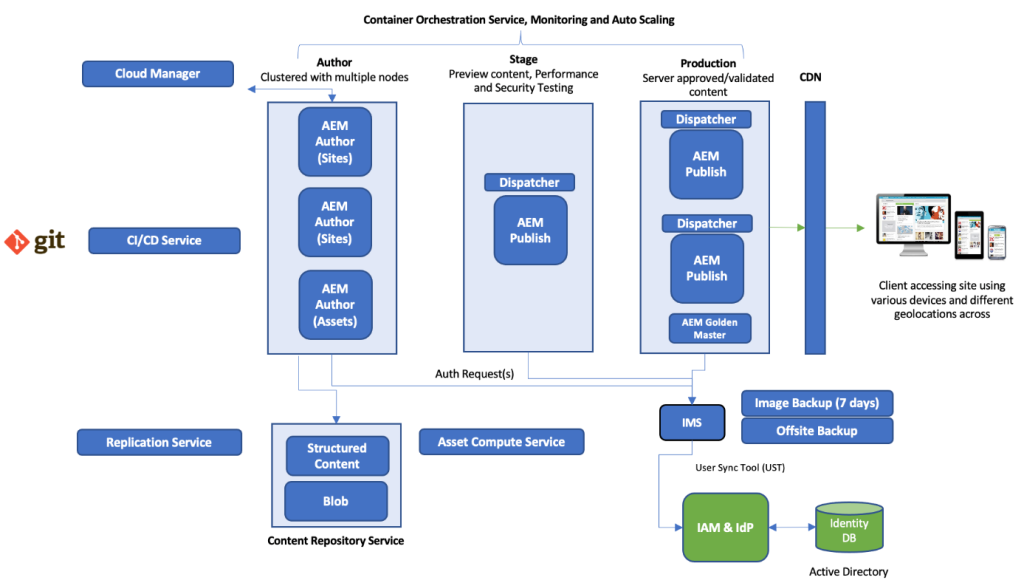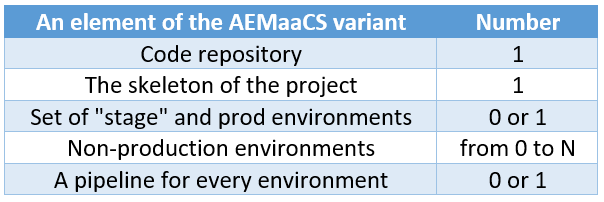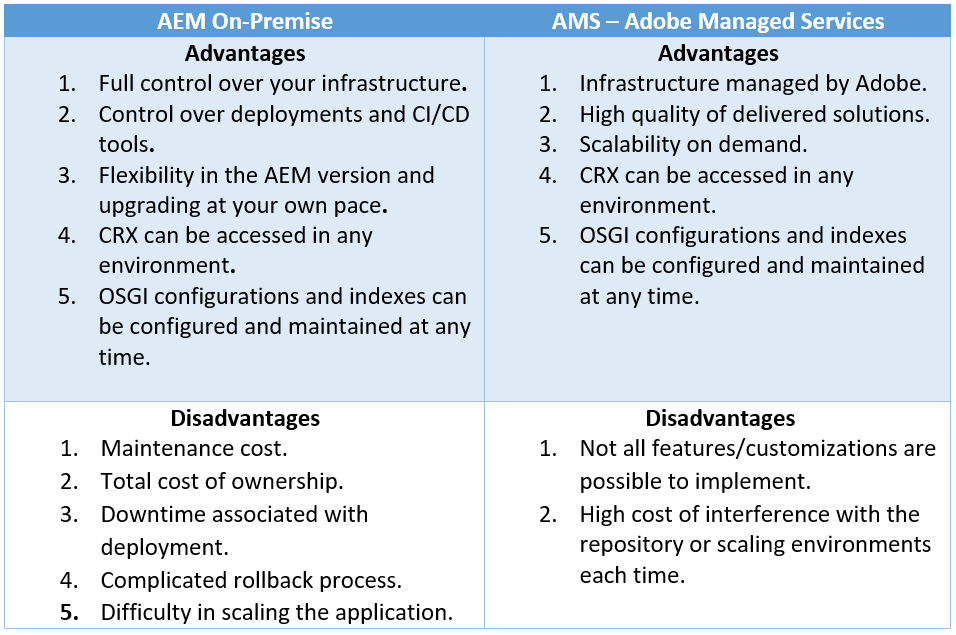If you work in the area of broadly understood content management, the name Adobe Experience Manager (AEM, previously known as CQ5) is certainly familiar to you. This is one of the flagship products offered by Adobe as part of the so-called Adobe Experience Cloud. AEM is a perfect example of how well you can develop a product, which is a CMS for large enterprises.
Evolution covered virtually all major aspects:
- functionalities (features),
- stability,
- integration with other products,
- deployment model.
Currently, organizations have three options for deploying Adobe Experience Manager:
- AEM On-Premise,
- AMS – Adobe Managed Service (mainly hosted on AWS),
- AEM as a Cloud Service (AEMaaCS).
This article will focus on AEM as a Cloud Service (AEMaaCS). It is the latest CMS solution in the form of software as a service offered by Adobe.
AEMaaCS builds on the industry-leading Adobe Experience Manager (AEM) solution and provides unique content management (CMS) and Digital Assets Management (DAM) capabilities to marketing, communications and development teams. The solution is entirely designed for the cloud and is easily scalable, secure, always available and up-to-date.
What is AEM as a cloud service?
The old, classic AEM was a large monolithic application and had some limitations (e.g., scalability or extensibility). AEM as a cloud service is the result of refactoring AEM applications into a set of modular components/services that are native to the cloud.
With this change, the new AEM distribution inherits the advantages of the cloud, such as scalability and agility, but also many basic concepts such as replication, resource processing repository management, etc. have been changed within the AEMaaCS offering.
Adobe Experience Manager (AEM) as a cloud service is the latest addition to the AEM product line that helps you continue to deliver personalized, content-driven experiences to your customers. Provides cloud-native flexibility to accelerate time-to-value and is extensible to meet unique enterprise-level business requirements.
AEMaaCS can be leveraged by building on previous designs and innovations while maintaining and extending all use cases and functionality.
Use of AEMaaCS
AEM as a cloud service enables you to use AEM applications in a cloud-specific way, so you can:
- Scale your DevOps efforts with Cloud Manager from Adobe, which offers:
- CI/CD structure,
- automatic scaling,
- API connectivity,
- flexible deployment modes,
- code quality gates,
- transparency of service delivery,
- update with guidelines.
- Allow developers to add automation to the application development process.
- Deliver content quickly and efficiently on a global scale, using a built-in content delivery network (CDN) and other network layers best practices.
- Use a dynamic architecture that scales automatically, thus eliminating infrastructure issues.
- Stay on top of threats and mitigate the risk of data breaches by using automated tests to scan for common vulnerabilities.
- Ensure maximum resiliency and performance supported by optimized performance topologies.
- Take advantage of the deep integration of AEM as a cloud service with Adobe Experience Cloud to provide a better customer experience with online marketing (Adobe Marketplace) and web analytics (Adobe Analytics) products.
- Take advantage of tools that help speed up migration tasks, such as code refactoring, content porting, and more.
Typical AEMaaCS environment
When deploying a new project using Adobe Experience Manager as a Cloud Service, an entire system of environments will be created. Within this variant of AEM, three types of environments are classically available as cloud services:
- Production environment – hosts the application for business and content authors.
- Stage environment – this is usually a 1:1 copy of the production environment. It is mainly used by QA, Security and Stability teams. It is used to perform various performance and quality tests before the changes are transferred to the production environment.
- Development environment (so-called Dev environment) – used mainly by development teams. It allows developers to deploy changes to AEM under the same runtime conditions as the aforementioned environments.
The AEM as a Cloud service option is a container that, in addition to the environments mentioned above, also includes:
Each new AEM project is always linked to exactly one specific code repository where both configurations and custom project code can be stored. This information is stored in a code repository that is accessible through regular Git clients when new environments are created.
AEMaaCS also includes two very important components:
- AEM Cloud Sites Service,
- AEM Cloud Assets Service.
Both services provide access to many basic functionalities necessary for the functioning of the CMS. The AEM authoring layer will contain all functionalities for both pages and resources (images, documents, audio and video files).
Why AEMaaCS?
Before answering the question posed in the title of the chapter, two very important questions should be answered in the context of delivering a CMS solution for large enterprises: what do end users expect and what does the business expect?
For the user, the most important features of a good website experience are:
- personalization,
- content selection,
- the speed of their display.
For business, on the other hand, the most important points are:
- end-user satisfaction,
- possibly optimized cost of delivery,
- scalable solutions that include the latest functionalities on the market.
The limitations of classic AEM and Adobe Managed Services should also be mentioned.
It is also worth mentioning some common disadvantages of the solutions mentioned above:
- Scalability has its limits due to the OAK/JCR repository used in “classic” AEM solutions
- Computing limits (e.g., resource processing and rendering)
- Problems with copying content mainly related to performance
- Security fixes must be manually deployed and take time to implement as appropriate testing is needed beforehand.
Most of the above-mentioned limitations caused the need to create an original and tailored cloud solution, which is AEMaaCS.
Below are some of the most important problems of its predecessors that are solved:
- Zero deployment downtime.
- Easy scalability.
- Always up to date with the latest Adobe features/upgrades.
- Relatively low cost of ownership.
- High level of security.
Lower cost of maintenance than the classic one.
Summary
A lot has changed (for good) with the advent of AEMaaCS. Adobe responded to the voices of customers and created one of the best CMS for large enterprises in history, striving to meet all requirements.
Considering all the reasons mentioned above, I believe that AEMaaCS is the best large-scale CMS solution right now.



















Leave a comment